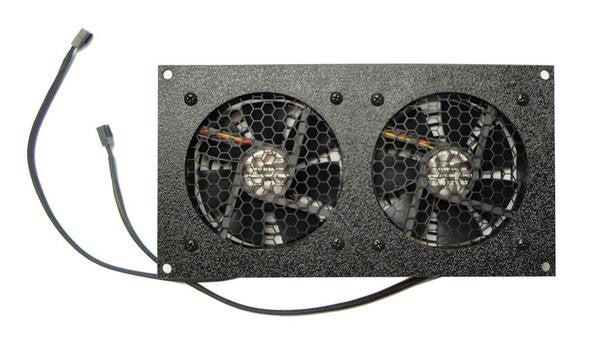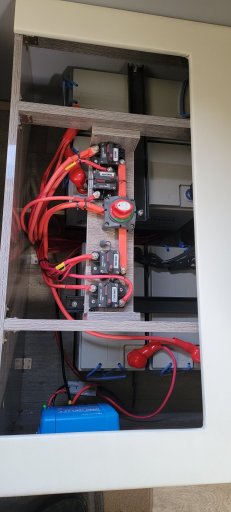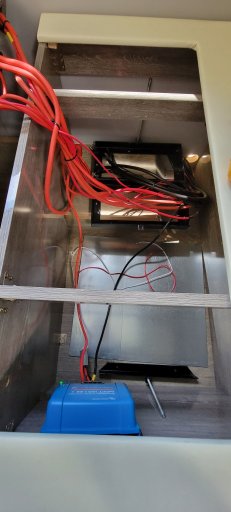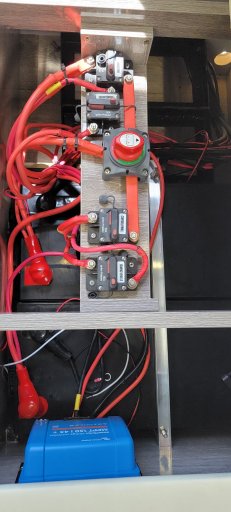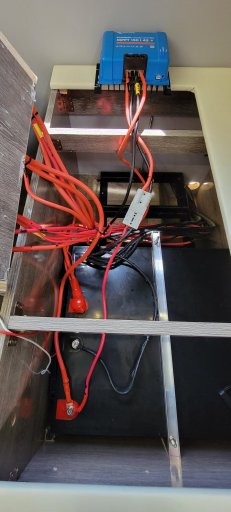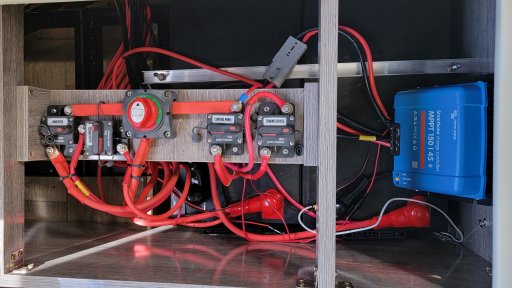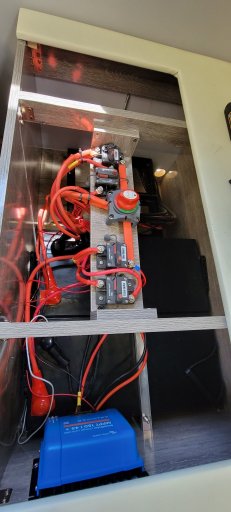
Trail Blazer III
- 6,000
- First Name
- Beau
- Last Name
- K12
- Member #
-
28559
- Service Branch
- Air Force
I am putting in some LiFePo4 batteries this weekend. They are both charged, voltage matched and ready to go. They do not have the internal heater so I am am taking a spare holding tank heater pad laying around the house and attatching it to a 20x18 sheet of metal to cover both batteries. From everything I have read, too much over the last couple months, this works to spread the heat enough to not melt the battery plastic, and has an internal temp control to turn on at 40° and off at 68°. My question is what would the easiest wiring be for the HQ19. Should I wire power to the bus bar and negative to either battery? Could I wire direct to one battery? since they are in parallel I think that it would only draw from the one battery which would be a no-no.
Last edited:




